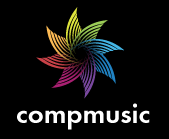Ontologies, Semantic Web and CompMusic
In CompMusic we have pooled in a lot of resourceful information about music from different parts of the world, from a variety of sources: metadata (eg: Musicbrainz), structured data on the web about different entities (eg: DBPedia pages for artists/raagas), audio analysis (eg: melodic/rhythmic descriptions) and data mining (eg: forum/social data analysis, textbooks). Dunya [1], being developed in the project, is a web-based software application to navigate the music collections using descriptions of concepts specific to the given music. Specifically in this context, even though each of the information sources is useful and important in its own way, interlinking them yields certain advantages. Some of these are mentioned as we progress through the blog post.
Interlinking information from different sources necessitates formal representation of the concerned musical concepts and their relationships. For instance, consider the lineage information of performers. The two axioms given below, together describe the concept of lineage in a semi-formal way.
- A performer_x is said to be of the same lineage as performer_y if there exists a succession of performers from one to another sharing the lineage.
- Any two performers are of the same lineage if one teaches another.
Such formal representation of the musical concepts, not only allows for a common vocabulary across the sources for interlinking, but also facilitates exposing the implicit knowledge by reasoning on information across the sources. Semantic web technologies help us in realizing these goals. Ontology languages which are grounded in formal logic, like Web Ontology Language (OWL), are used in building representations for concepts and their relationships. Thereafter, the information from all the sources need to be expressed using this vocabulary. This in itself facilitates the interlinking of those sources. The linked data can then be made available for consumption/publication by a web applications/agents using Resource Description Framework (RDF).
All this work will open up new avenues of research where different analyses can take advantage of each other. For instance, sequence subsumption and the consequential classifications in an ontology can guide a motif identification algorithm, and vice-versa. The data obtained from tonic, intonation analyses can be combined with age, lineage, and region information to draw more insights. The intonation of raagas can be better understood in the light of information about their properties, and relationships with each other. Consistency checks on an ontology can make way to evaluating some of our data analyses.
3rd ESWC summer school
To understand the semantic web domain better and get to know the people working in it, I have attended the 3rd ESWC Summer school which took place from Sep 2 - 7, 2013 in a small village called Kalamaki, located in Crete, Greece. This is in fact the first time that CompMusic project is represented in a semantic web event. The school has three main kinds of activities: keynotes, tutorials and hands-on sessions (oh yes, and social events!). The keynotes are very informative about the happenings and current trends of the semantic web. They touched upon various topics: the necessity of RDF for linked data, criticism for ontologies as vocabularies shared only top-down, programming environments and languages developed with notions of semantic web builtin, linked data applications in governance, problems in linked data evolution, and big data. The tutorials are mainly aimed at introducing various semantic web technologies and helping students to take them on in hands-on sessions. In the first two days, all the 40 attendees presented a poster each, which is about their masters/PhD topic of research, or the project they are currently working on. Our poster won the 3rd prize! The comments and feedback are quite positive. It is said that Dunya can be a very good example of a semantic web application if our goals materialize. The poster can be found attached to this post.
The most intense part of the school is to come up with a project idea, form a group and implement it in the last two days! Our team, named TooLate, implemented a visualization of evolution of various genres in western music over geography and time. All the data for this application is taken from linked and structured data sources. The project, named Darwins Music, is available on github, and is under active development at the moment as we decided to take it further and make it an open toolkit to work with linked and structured music data on the web. The project won the first prize! The better part of it is the collaboration within our team. Each of us came from a diverse background and contributed in a unique way. We have several ideas based on this project, and hope to continue collaborating on them in future.
In summary, it has been a fantastic experience that ironed out many of the gaps I found during self learning, while also pointing me to the topics I should further learn. It also left me with many contacts whom I can readily approach. Apart from the scholarly experience, the school also emphasized the ability to communicate the ideas with a pleasant demeanour, for which all the tutors have been very good examples to learn from!
[1]: (In Press). Dunya: A System for Browsing Audio Music Collections Exploiting Cultural Context. 14th International Society for Music Information Retrieval Conference (ISMIR 2013).



